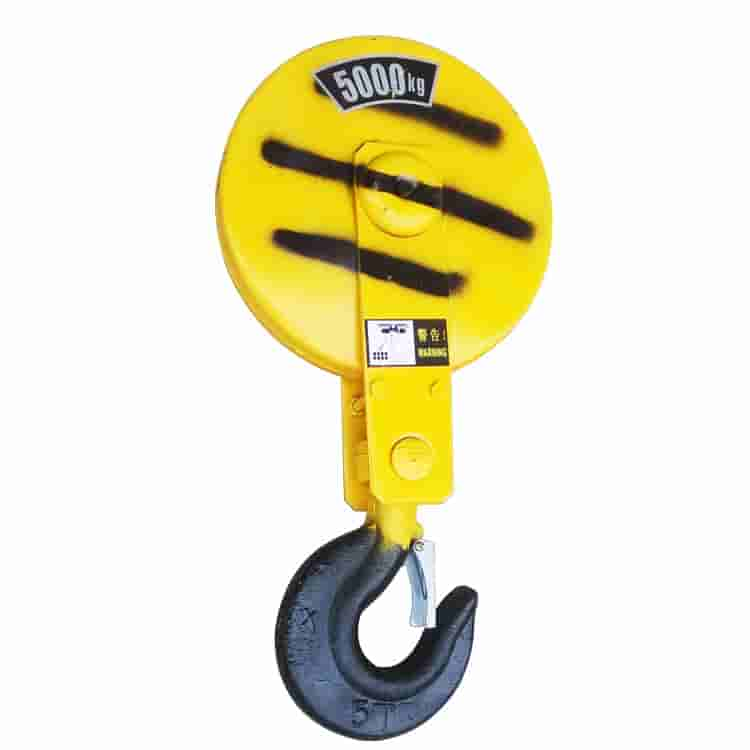Crane hook group is the most common type of spreader in hoisting machinery. The hook is often suspended on the wire rope of the hoisting mechanism by means of pulley blocks and other components. The hook is divided into single hook and double hook according to the shape; according to the manufacturing method, it is divided into forged hook and laminated hook.

The hook group is the most commonly used lifting device in lifting machinery, and it is one of the important lifting equipment on lifting machinery, so its quality requirements are very high. There are two common types of hooks, that is Single hook and double hook, let’s introduce their material requirements.
Single hook is a commonly used hook with simple structure and convenient use.
There are several types of single hooks: a single hook with a threaded straight shank and a single hook with a loop, the threaded part is connected to the hanger, and the loop is used to directly connect with the wire rope.
The force of the double hook is symmetrical, and the material of the hook body is fully utilized, but there is no single hook convenient for use.
The structural dimensions of the hook have been national standards. Under normal circumstances, it can be selected directly according to the relevant standards according to the size of the lifting weight and the type of work (manpower or motorized).
Once the hook is broken during use, it is very easy to cause accidents. Therefore, it must be used in strict accordance with the regulations when using it, and it must not be overloaded. Do not use the hook without load mark.
The hooks that are frequently used should be checked regularly, and they should be scrapped in time when the following conditions are met:
(1) Those with cracks, cracks or cracks on the surface shall be scrapped;
(2) The wear of the dangerous section exceeds 10% of the original size and should be scrapped;
(3) The dangerous section and the neck of the hook have plastic deformation and should be scrapped;
(4) The opening degree is increased by 15% compared to the original size and should be scrapped;
(5) The torsional deformation of the tip of the hook exceeds 10% and should be scrapped.
The specific use and inspection method of the correct use of the hook set
In the process of using the hook set, a professional operator is required to perform the operation. From installation to use, it needs to be carried out in accordance with the specifications. Do you know how to use the fully enclosed hook set correctly? Let me introduce you in detail below. :
1. Before using the hook set, make sure that it is produced by a regular manufacturer and has a certificate of conformity. It can not be used blindly, and its opening degree, weighing and other indicators are tested more strictly;
2. Check that the rated lifting capacity marked on the hook shall not be less than the actual lifting capacity. If there is no mark or the lifting weight mark is illegible, the rated lifting capacity shall be determined by recalculation and conformity test;
3. Special hooks on hoisting machinery have higher requirements, and must ensure that their surface is smooth and free of defects such as peeling, nicks, sharp angles, joints and cracks;
4. Use kerosene to clean the three dangerous sections of the hook, and use a magnifying glass to see if there are cracks. For the plate hook, the price difference, the wear and tear of the pin;
5. Pay attention to the observation and inspection of the etching during the use of the hook group to check whether there are hidden dangers such as deformation, cracks, cross-sections, etc. It is best not to have overweight behavior, so as not to shorten the service life of the fully enclosed hook group.
Contact our crane specialists
Send us a message and we will get back to you as soon as possible.